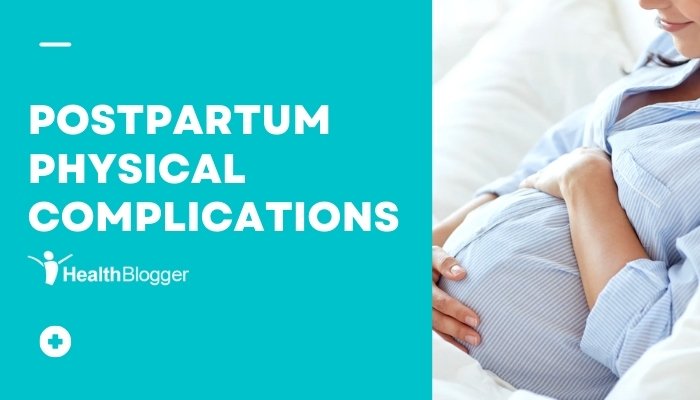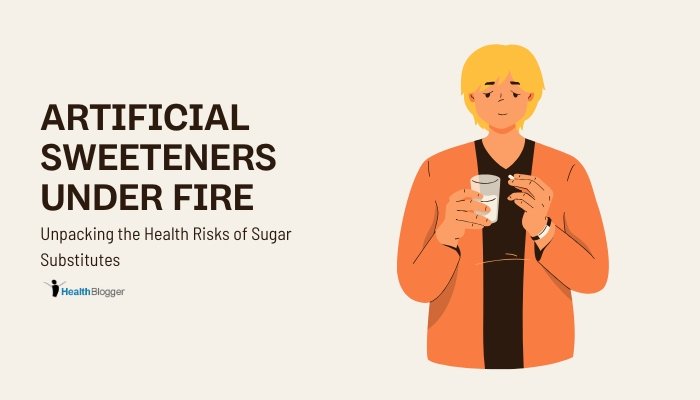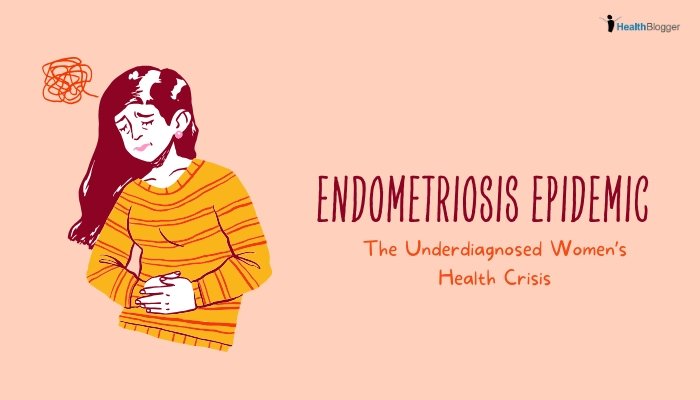While childbirth is often celebrated, a third of women experience persistent physical complications—ranging from pelvic floor injuries to chronic pain—that can extend well beyond the traditional 6-week postpartum checkup.

Despite the prevalence of these issues, postpartum care frequently focuses on short-term recovery, leaving many mothers with underdiagnosed and undertreated conditions that hamper daily life.
This article explores the most common long-term postpartum complications, why they’re overlooked, and how to improve follow-up and support for new mothers.
Introduction
The postpartum phase is frequently framed as a 6-week window of rest, basic recovery, and newborn care. However, large-scale surveys and clinical data indicate that up to one-third of women continue to experience physical complications months or even years after childbirth. From urinary incontinence to chronic back pain, these lasting conditions often remain under-discussed or minimized. Recognizing these complications and ensuring robust postpartum follow-up is vital for preserving women’s long-term health and quality of life.
Common Postpartum Physical Complications
- Pelvic Organ Prolapse: Weakening of pelvic floor muscles may cause organs (like the bladder or uterus) to slip downward.
- Urinary or Fecal Incontinence: Stress incontinence (leaking upon coughing or sneezing) is a frequent complaint.
- Diastasis Recti: Separation of abdominal muscles can persist, leading to core instability and back issues.
- Perineal or Scar Pain: Episiotomy or cesarean incisions can lead to chronic discomfort, pain during intercourse, or numbness.
- Chronic Fatigue or Exhaustion: While common postpartum, it can become a chronic condition if combined with other factors.
Why Long-Term Issues Go Overlooked
- Short Postpartum Medical Focus: Standard postpartum checks typically conclude by 6 weeks, missing late-emerging problems.
- Cultural Norms: Many cultures encourage women to “push through” pain or incontinence, seeing it as a normal postpartum sacrifice.
- Lack of Provider Training: Some clinicians receive limited education on diagnosing and managing postpartum pelvic floor or musculoskeletal complaints.
- Low Awareness: Mothers themselves may not realize symptoms are abnormal or treatable.
Pelvic Floor Injuries and Incontinence
Mechanisms
- Labor Strain: Prolonged pushing or instrumental deliveries (forceps, vacuum) can stretch or tear pelvic muscles and nerves.
- Hormonal Influences: Pregnancy hormones can weaken connective tissue even before birth.
Consequences
- Urinary Incontinence: Stress incontinence during coughing or laughing; urge incontinence with sudden bladder urges.
- Fecal Incontinence: Less common but deeply distressing if the anal sphincter was damaged.
- Sexual Dysfunction: Pain or reduced sensation interfering with intimacy.
Solutions
- Pelvic Floor Therapy: Kegel exercises, physiotherapy, or biofeedback.
- Surgical Interventions: Sling procedures or repairs for more severe incontinence or prolapse.
- Lifestyle Adjustments: Weight management, fluid timing, avoiding heavy lifting.
Chronic Pain and Musculoskeletal Problems
Low Back Pain
- Postural Changes: Weakened abdominal support (diastasis recti), postpartum carrying of the baby, or poor ergonomics can exacerbate back strain.
- Pelvic Girdle Pain: Residual joint laxity or misalignment from pregnancy can linger.
Diastasis Recti
- Core Instability: Separation of the rectus abdominis muscles leads to compromised abdominal support.
- Functional Impact: Difficulty lifting objects, possible hernias, or persistent belly “pooch.”
Management
- Physical Therapy: Targeted exercises to strengthen the core, realign posture, and relieve pressure on joints.
- Ergonomic Adjustments: Proper baby-carrying techniques and supportive postpartum belts.
Hormonal and Menstrual Changes
- Prolonged Irregularities: Hormones take time to stabilize, especially if breastfeeding. Spotting or unpredictable cycles can persist.
- Mood Fluctuations: While postpartum depression is known, hormonal imbalances can also trigger irritability, hot flashes, or mental stress.
- Thyroid Dysfunction: Postpartum thyroiditis may cause transient hyper- or hypothyroidism, requiring monitoring.
Mental Health Overlaps and Stigma
- Physical Symptoms vs. Mental Distress: Chronic pain or incontinence can spur anxiety, depression, or lowered self-esteem.
- Social Taboo: Women may avoid discussing leaking or perineal pain, lacking community or professional support.
- Integration of Care: Holistic postpartum care includes mental health screenings, ensuring that physical issues do not spiral into psychological crises.
Importance of Extended Postpartum Care
New ACOG Recommendations
The American College of Obstetricians and Gynecologists (ACOG) promotes a “fourth trimester” model—urging checkups beyond 6 weeks, possibly up to 12 weeks or more, to identify ongoing or late-emerging issues.
Multidisciplinary Support
- Pelvic Floor Therapists: Specialists can diagnose and treat postpartum incontinence or prolapse.
- Nutritionists: Address postpartum nutrient deficits or weight management.
- Mental Health Professionals: Provide counseling for postpartum depression, anxiety, or trauma from difficult births.
Potential Screening and Diagnostic Tools
- Physical Exams: Pelvic floor strength assessments, checking for diastasis recti.
- Ultrasound or MRI: Evaluate muscle tears or scar tissue in complicated cases.
- Questionnaires: Tools measuring incontinence severity, pelvic pain, or quality of life.
- Referrals: Women reporting persistent issues should be referred to relevant specialists (urologists, physical therapists, mental health counselors).
Treatment and Support Options
- Pelvic Floor Rehabilitation
- Often the first line of treatment for incontinence or prolapse.
- Conservative Measures
- Pessaries (supports for pelvic organs) or specialized postpartum garments.
- Surgical Corrections
- For severe prolapse or unresponsive injuries, procedures like sling surgeries or reconstructive operations may be necessary.
- Pain Management
- Physiotherapy, nerve blocks, or targeted exercises address chronic musculoskeletal pain.
- Emotional and Social Support
- Group sessions, postpartum doulas, and peer support networks reduce isolation.
Practical Tips for Mothers
- Report Symptoms Early
- Seek medical attention if incontinence, pain, or other issues persist beyond a few weeks.
- Ask About Referrals
- Request pelvic floor therapy or specialized postpartum rehab if your OB/GYN does not automatically offer it.
- Lifestyle Adjustments
- Core strengthening exercises (under professional guidance) can help with low back pain or diastasis recti.
- Maintain a nutrient-rich diet supporting tissue repair and overall health.
- Advocate for Extended Follow-Up
- Ask for postpartum checkups beyond the traditional 6-week mark to catch chronic problems.
Conclusion
Childbirth can leave long-lasting physical effects—pelvic floor dysfunction, chronic musculoskeletal pain, hormonal imbalances, or postpartum thyroid issues. While about a third of women face ongoing complications, postpartum care often ends prematurely, ignoring many unmet health needs. By incorporating extended medical evaluations, targeted interventions (like pelvic floor therapy), and better public awareness, we can reduce the stigma and suffering tied to postpartum injuries. Comprehensive, long-term support for new mothers ensures improved physical well-being, emotional resilience, and enhanced quality of life in the months and years after delivery.
References
- ACOG. The fourth trimester: Optimizing postpartum care. Committee Opinion No. 736; 2018.
- Laganà AS, et al. Postpartum pelvic floor dysfunction and related risk factors. J Matern Fetal Neonatal Med. 2019;32(7):1157-1163.
- Miller JM, Low LK, Zielinski R, et al. Pelvic floor injuries in childbirth. Am J Obstet Gynecol. 2015;213(6):668-674.
- Glazener CM. Postnatal maternal morbidity: Extent, causes, prevention and treatment. BJOG. 2018;125(8):1029-1035.
- MacArthur C, Winter HR, Bick DE, et al. Redesigning postnatal care: A randomised controlled trial of protocol-based midwifery-led postnatal care to reduce postpartum morbidity. BMJ. 2019;367:l6520.
- Handa VL, et al. Pelvic floor disorders after vaginal birth. Obstet Gynecol. 2019;134(4):738-747.
- Royal College of Obstetricians & Gynaecologists (RCOG). Obstetric practice regarding postpartum assessment. Published 2021.
- Panico G, et al. Diastasis recti abdominis after childbirth. Curr Opin Obstet Gynecol. 2020;32(6):443-451.






